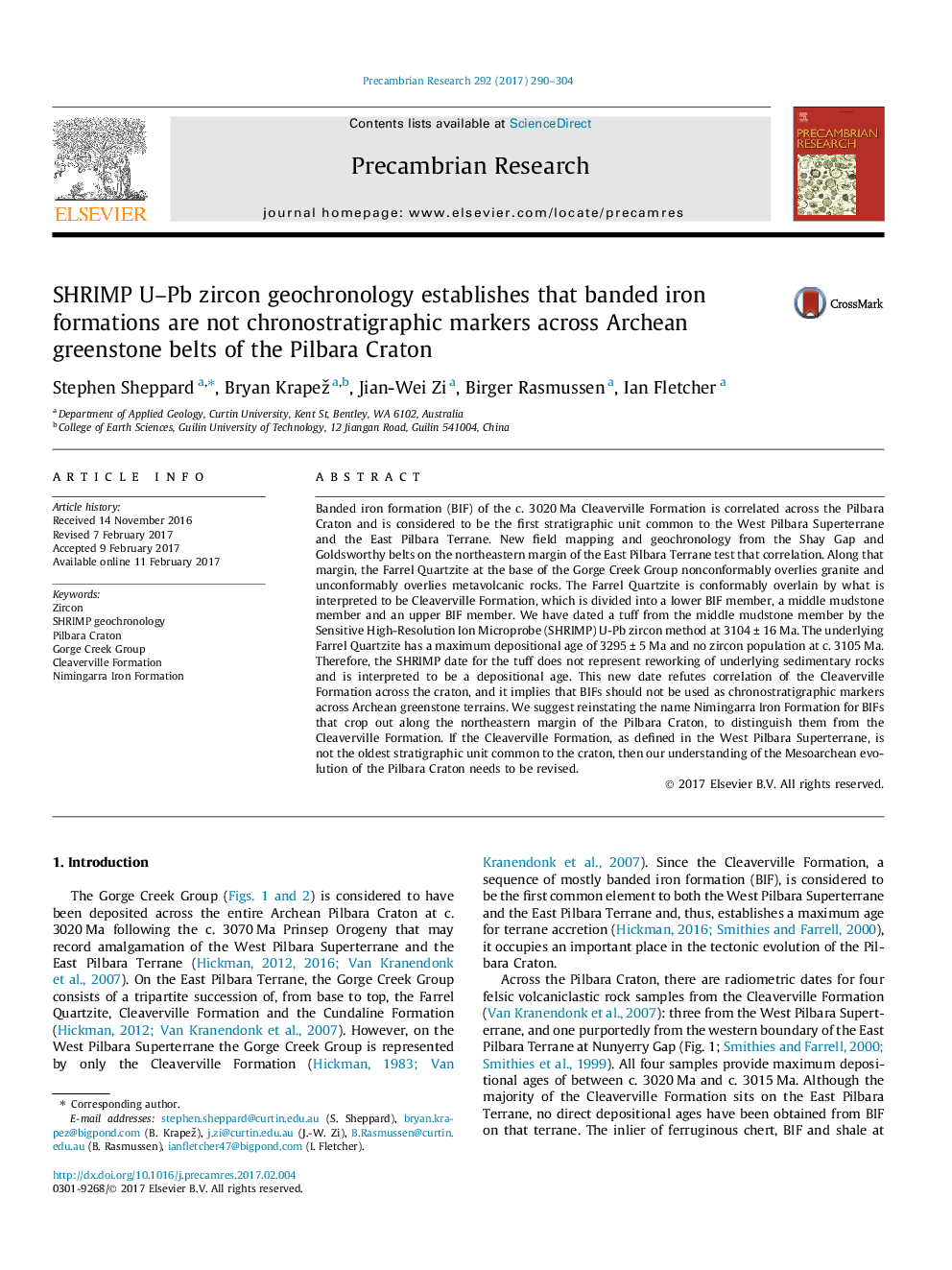| Article ID | Journal | Published Year | Pages | File Type |
|---|---|---|---|---|
| 5784768 | Precambrian Research | 2017 | 15 Pages |
â¢The c. 3020 Ma Cleaverville Formation is the oldest unit correlated across the Pilbara Craton.â¢However, the formation in the eastern part of the craton was deposited at c. 3105 Ma.â¢The Cleaverville Formation is not a chronostratigraphic marker.â¢The Mesoarchean amalgamation history of the craton may need to be revised.
Banded iron formation (BIF) of the c. 3020 Ma Cleaverville Formation is correlated across the Pilbara Craton and is considered to be the first stratigraphic unit common to the West Pilbara Superterrane and the East Pilbara Terrane. New field mapping and geochronology from the Shay Gap and Goldsworthy belts on the northeastern margin of the East Pilbara Terrane test that correlation. Along that margin, the Farrel Quartzite at the base of the Gorge Creek Group nonconformably overlies granite and unconformably overlies metavolcanic rocks. The Farrel Quartzite is conformably overlain by what is interpreted to be Cleaverville Formation, which is divided into a lower BIF member, a middle mudstone member and an upper BIF member. We have dated a tuff from the middle mudstone member by the Sensitive High-Resolution Ion Microprobe (SHRIMP) U-Pb zircon method at 3104 ± 16 Ma. The underlying Farrel Quartzite has a maximum depositional age of 3295 ± 5 Ma and no zircon population at c. 3105 Ma. Therefore, the SHRIMP date for the tuff does not represent reworking of underlying sedimentary rocks and is interpreted to be a depositional age. This new date refutes correlation of the Cleaverville Formation across the craton, and it implies that BIFs should not be used as chronostratigraphic markers across Archean greenstone terrains. We suggest reinstating the name Nimingarra Iron Formation for BIFs that crop out along the northeastern margin of the Pilbara Craton, to distinguish them from the Cleaverville Formation. If the Cleaverville Formation, as defined in the West Pilbara Superterrane, is not the oldest stratigraphic unit common to the craton, then our understanding of the Mesoarchean evolution of the Pilbara Craton needs to be revised.
